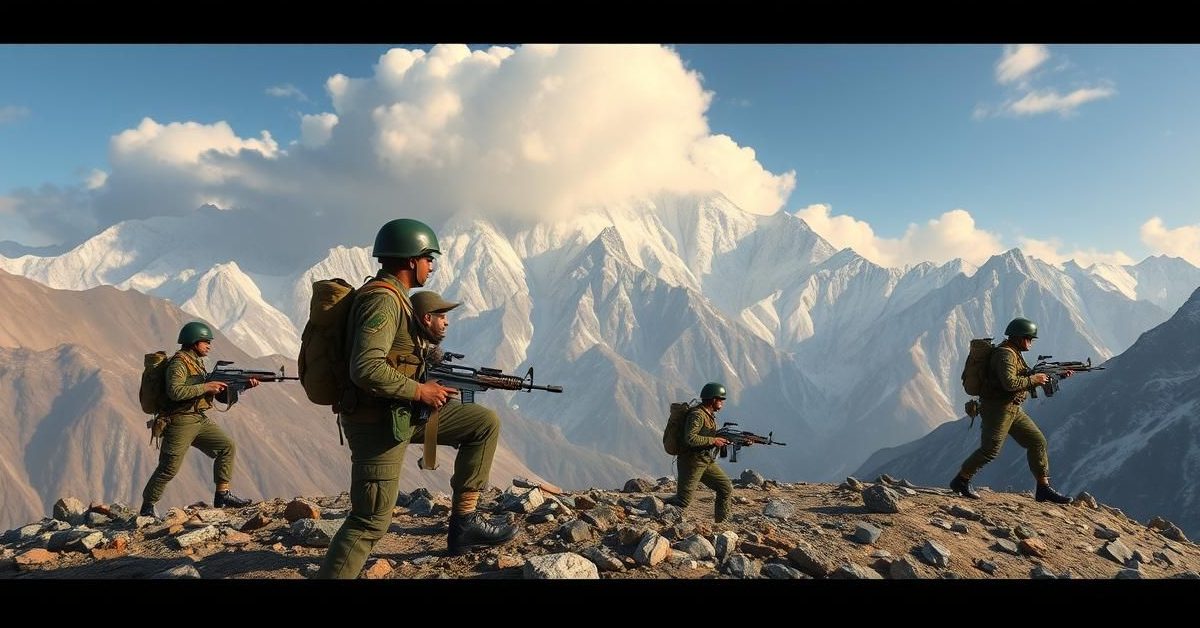The Kargil War of 1999 saw India and Pakistan clash in a brutal, high-altitude conflict, raising questions about why Pakistan launched such a risky military gamble so soon after peace efforts.
A Bold, Secret Operation
In the summer of 1999, just months after signing the Lahore Declaration for peace talks, India and Pakistan were embroiled in a fierce conflict in the Kargil mountains. Pakistani Northern Light Infantry units covertly crossed into Indian territory during winter, occupying strategic heights typically left unmanned due to harsh weather.
This intrusion was kept highly secret, even from many within Pakistan’s own government. It was initially portrayed as an act by Kashmiri militants, though it was a clear military operation by the Pakistan Army. Once the snow melted and India discovered the infiltrators, a two-month-long military operation began to push them back.
The “Realist” Mindset
One way to understand Pakistan’s actions is through “realism,” a view that sees international politics as a power struggle between self-interested nations. In this world, survival is paramount, and power is the means to achieve it.
Pakistan’s military thinking has been heavily shaped by the 1971 war, which led to the loss of East Pakistan. With India’s growing conventional strength, Pakistan felt increasingly vulnerable. However, the 1998 nuclear tests by both countries changed the dynamic.
Pakistan believed that nuclear weapons would prevent a full-scale war, creating a “stability-instability paradox.” This meant that while nuclear arsenals made large wars unlikely, they might make smaller, limited conflicts seem more manageable without escalating into a full-blown war.
This logic influenced the Kargil plan. Pakistan saw an opportunity when Indian troops vacated high-altitude posts. They hoped to create military and diplomatic pressure, force India into negotiations, and draw international attention to the Kashmir issue, believing the conflict would remain localized.
Civilian-Military Dysfunction
Beyond external pressures, Pakistan’s internal power dynamics also played a crucial role. The military, not elected leaders, has historically dominated national security decisions. General Pervez Musharraf, then army chief, reportedly planned and executed the Kargil operation without fully informing Prime Minister Nawaz Sharif.
This reflects a long-standing pattern where the military sees itself as the ultimate protector of Pakistan’s interests, especially against India. Such a successful military operation could have derailed peace talks, undermined civilian authority, and strengthened the military’s grip on foreign policy. Indeed, within months of the war, Musharraf staged a coup, removing Sharif from power.
Identity and Narrative
Ideas and national identity also shaped the Kargil decision. For Pakistan’s military, India is a constant threat, and Kashmir is an “unfinished mission” from the Partition. This deep-seated belief is often reinforced in public discourse and military training.
The Kargil operation was framed as a “freedom struggle” by Kashmiri mujahideen, an attempt to gain international sympathy and justify the actions. However, this narrative quickly crumbled under scrutiny, as evidence revealed regular soldiers, not local militants, were involved. The global community largely saw it as an act of aggression.
Why the Gamble Failed
The Kargil operation failed on almost every front. It did not bring India to the negotiating table, and Pakistan’s “freedom struggle” claim gained little support internationally. Even close allies like China and Saudi Arabia did not back Pakistan’s move.
The biggest blow came when the United States, through President Bill Clinton, pressured Pakistan to withdraw unconditionally. By the end of July, Pakistani forces began to pull back.
Strategically, the costs were immense: diplomatic isolation, reputational damage, and lost soldiers and equipment. The core miscalculation was the belief that nuclear deterrence would prevent a strong Indian response. India pushed back forcefully without crossing the nuclear threshold, proving that even between nuclear powers, limited wars are possible when risks are misread.
- Pakistan’s Kargil gamble was driven by a “realist” belief that nuclear weapons would deter a strong Indian response.
- Internal civil-military dysfunction meant the military acted independently, bypassing civilian oversight.
- The operation was framed by a national identity viewing India as a threat and Kashmir as an “unfinished mission.”
- The plan failed due to international condemnation and a miscalculation of India’s willingness to respond forcefully.
Kargil remains a stark lesson in the dangers of military ambition, weak civilian oversight, and misjudged national narratives. It highlighted significant flaws in strategic planning and demonstrated that nuclear weapons do not grant immunity for reckless actions.















